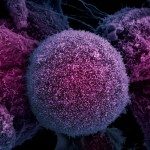Lien vers Pubmed [PMID] – 21981310
Aging Cell 2012 Feb;11(1):41-50
Embryonic stem (ES) cells and induced pluripotent stem (iPS) cells represent a promising therapeutic tool for many diseases, including aged tissues and organs at high risk of failure. However, the intrinsic self-renewal and pluripotency of ES and iPS cells make them tumorigenic, and hence, the risk of tumor development hinders their clinical application. Here, we present a novel approach to limit their tumorigenicity and increase their safety through increased copy number of tumor suppressors. iPS containing an extra copy of the p53 or Ink4a/ARF locus show normal pluripotency, as determined by in vitro and in vivo differentiation assays. Yet, while retaining full pluripotency, they also possess an improved engagement of the p53 pathway during teratocarcinoma formation, which leads to a reduced tumorigenic potential in various in vitro and in vivo assays. Furthermore, they show an improved response to anticancer drugs, which could aid in their elimination in case tumors arise with no adverse effects on cell function or aging. Our system provides a model for studying tumor suppressor pathways during reprogramming, differentiation, and cell therapy applications. This offers an improved understanding of the pathways involved in tumor growth from engrafted pluripotent stem cells, which could facilitate the use of ES and iPS cells in regenerative medicine.

